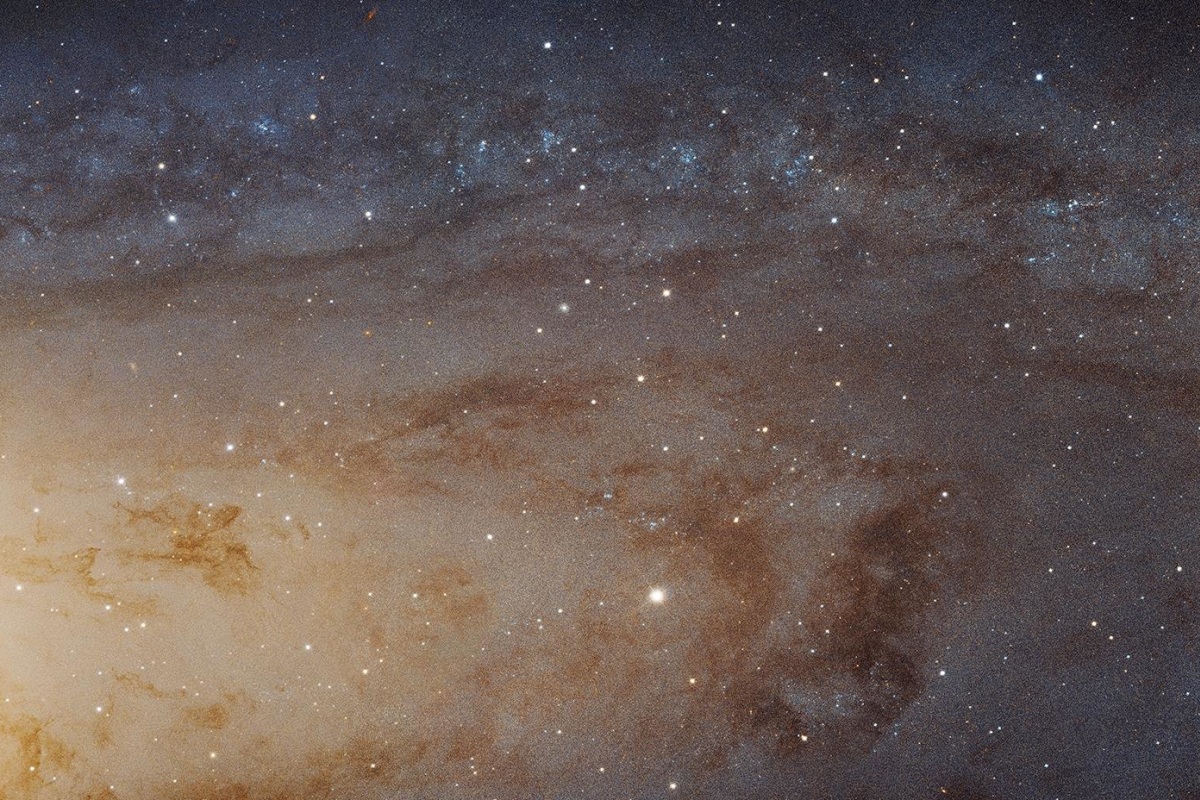I am hugely interested in what Gaia will be able to tell us.
However, today's APOD makes me slightly confused. We see a lot of dust structures in our own galaxy, and we can very clearly see the Large and the Small Magellanic Clouds. We can very clearly see the yellow bulge of our galaxy, and we can tell the difference between the yellow inner bulge and inner disk and the non-yellow outer parts of our galaxy.
But where are all the bright stars? There are a handful of obvious bright individual lights in the picture, but they are clearly globular clusters. To the left of the Small Magellanic Cloud at bottom right in the picture is a bright light, which is our galaxy's second brightest globular cluster, 47 Tuc. The brightest of our galactic globulars, Omega Centauri, can be seen in splendid isolation in the right-hand part of the picture, just above the plane of the Milky Way. But again, where are the stars?
The Pipe Nebula and the Antares region.
Photo: Martin P Campbell.
Take a look at the picture at left. The Pipe Nebula is the very black and slightly pipe-like dust structure at left. To the right in the picture is Antares and the Rho Ophiuchi region. The brightest star here is Antares itself, which can be seen right below the very orange patch of yellow nebulositiy in Martin P Campbell's picture. To the right of Antares is another yellowish bright patch, which is globular cluster M4.
In the APOD, we can pick out the Pipe Nebula and the dusty tendrils rising high above the plane of the Milky Way. These lofty tendrils point us to the place where Antares and the Rho Ophiuchi region ought to be. But there is only one bright spot to be seen here in the APOD, and I believe that the one bright spot is globular cluster M4.
I'm pretty certain that Gaia simply can't photograph bright stars, because their light would overload Gaia's sensors (or something). To me, however, the lack of bright stars is confusing, making it hard for me to orient myself in the picture.
In the left-hand part of the APOD, there is only one individual object that I can pick out - or maybe two, because the "one" object is the Double Cluster. It can be seen as an elongated small bright structure just below the plane of the Milky Way relatively far to the left in the picture.
But it seems to me that we should be able to spot the Andromeda Galaxy. Where is it? Is it below Gaia's horizon in this picture?
And where are the Pleiades? The brightest stars here are too bright for Gaia, undoubtedly. But there are fainter stars here too, and maybe they might be tolerable for Gaia? But maybe they are below Gaia's horizon, like Andromeda?
Ann
 Gaia's Milky Way
Gaia's Milky Way



